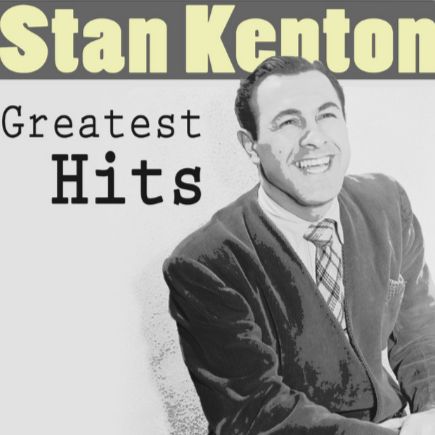How High the Moon: l’ascension d’un standard emblématique
Composée en 1940 par Morgan Lewis, sur des paroles de Nancy Hamilton, How High the Moon fait sa première apparition dans la revue de Broadway Two for the Show, interprétée par Alfred Drake et Frances Comstock. Dans ce spectacle au ton généralement léger, la chanson faisait figure d’exception, apportant une touche de gravité et de poésie.
Très vite, elle dépasse le cadre de la scène pour s’imposer comme l’un des standards les plus emblématiques du répertoire jazz. À travers ses harmonies souples et sa structure ouverte, How High the Moon incarne un tournant dans l’histoire du jazz. Composée à un moment où le genre amorce une nouvelle phase de diversification et d’expérimentation, elle devient un support privilégié pour l’improvisation, stimulant la créativité des musiciens.
Les paroles expriment un sentiment de manque et de désir, évoquant un amour lointain, presque irréel. Cette tension entre espoir et inaccessibilité reflète une thématique chère au jazz: celle de la quête, du rêve toujours à portée mais jamais saisi.
L’audace orchestrale de Stan Kenton
Enregistrée à New York le 21 décembre 1947, cette version de How High the Moon réunit deux artistes majeurs du jazz moderne: Stan Kenton, pionnier du jazz orchestral, et la chanteuse June Christy, dont la voix lumineuse et subtile s’imposa comme l’une des plus marquantes de l’après-guerre.
Dans un contexte d’effervescence artistique où le jazz cherche à se réinventer après la Seconde Guerre mondiale, Kenton proposeune version avec des arrangements complexes, des tensions harmoniques inattendues et des rythmes syncopés qui rompent avec le swing traditionnel.
June Christy y déploie toute la finesse de son art. Ancienne chanteuse du big band de Kenton depuis 1945, elle a contribué à façonner le fameux Kenton Sound par sa voix claire, veloutée et nuancée. Dans cette version, elle mêle douceur et intensité, apportant une dimension émotionnelle qui transcende la simple interprétation du standard. Sa diction précise, son phrasé souple et son sens du timing donnent à la chanson un équilibre rare entre élégance et sincérité.
How High the Moon: el ascenso de un estándar emblemático
Compuesta en 1940 por Morgan Lewis, con letra de Nancy Hamilton, How High the Moon apareció por primera vez en la revista de Broadway Two for the Show, interpretada por Alfred Drake y Frances Comstock. En un espectáculo de tono generalmente ligero, la canción destacaba por aportar una nota de gravedad y poesía.
Muy pronto, trascendió el ámbito teatral para imponerse como uno de los estándares más emblemáticos del repertorio jazzístico. Con sus armonías flexibles y su estructura abierta, How High the Moon marcó un punto de inflexión en la historia del jazz. Compuesta en un momento en que el género entraba en una nueva etapa de diversificación y experimentación, se convirtió en una plataforma ideal para la improvisación, estimulando la creatividad de los músicos.
La letra expresa un sentimiento de anhelo y deseo, evocando un amor lejano, casi irreal. Esta tensión entre esperanza e inaccesibilidad refleja un tema central del jazz: la búsqueda, el sueño que siempre parece cercano, pero nunca alcanzado.
La audacia orquestal de Stan Kenton
Grabada en Nueva York el 21 de diciembre de 1947, esta versión de How High the Moon reúne a dos figuras esenciales del jazz moderno: Stan Kenton, pionero del jazz orquestal, y la cantante June Christy, cuya voz luminosa y sutil se impuso como una de las más emblemáticas de la posguerra.
En un contexto de efervescencia artística en el que el jazz buscaba reinventarse tras la Segunda Guerra Mundial, Kenton propone una versión con arreglos complejos, tensiones armónicas inesperadas y ritmos sincopados que rompen con el swing tradicional. Su enfoque revela una voluntad de expansión musical, donde la precisión estructural se combina con una energía expresiva profundamente moderna.
June Christy despliega aquí toda la delicadeza de su arte. Cantante del big band de Kenton desde 1945, contribuyó a definir el célebre Kenton Sound con su voz clara, aterciopelada y llena de matices. En esta interpretación combina dulzura e intensidad, aportando una dimensión emocional que trasciende la simple lectura del estándar. Su dicción precisa, su fraseo fluido y su impecable sentido del tiempo confieren a la canción un equilibrio único entre elegancia y sinceridad.
How High the Moon: l’ascesa di uno standard emblematico
Composta nel 1940 da Morgan Lewis, con testi di Nancy Hamilton, How High the Moon debutta nella rivista di Broadway Two for the Show, interpretata da Alfred Drake e Frances Comstock. In uno spettacolo dal tono perlopiù leggero, la canzone si distingue per una nota di gravità e poesia.
Ben presto, esce dai confini del teatro per affermarsi come uno degli standard più iconici del repertorio jazz. Grazie alle sue armonie flessibili e alla struttura aperta, How High the Moon rappresenta una svolta nella storia del jazz. Composta in un periodo di grande fermento creativo, quando il genere si avviava verso una fase di diversificazione e sperimentazione, divenne uno strumento privilegiato per l’improvvisazione, stimolando la fantasia dei musicisti.
Il testo esprime un sentimento di mancanza e desiderio, evocando un amore lontano, quasi irreale. Questa tensione tra speranza e inaccessibilità riflette un tema caro al jazz: quello della ricerca, del sogno sempre vicino eppure mai afferrato.
L’audacia orchestrale di Stan Kenton
Registrata a New York il 21 dicembre 1947, questa versione di How High the Moon riunisce due figure fondamentali del jazz moderno: Stan Kenton, pioniere del jazz orchestrale, e la cantante June Christy, la cui voce luminosa e raffinata si affermò come una delle più rappresentative del dopoguerra.
In un contesto di fervore artistico in cui il jazz cercava di reinventarsi dopo la Seconda guerra mondiale, Kenton propone una versione con arrangiamenti complessi, tensioni armoniche impreviste e ritmi sincopati che rompono con lo swing tradizionale. Il suo approccio rivela una visione ambiziosa, capace di fondere rigore formale ed energia creativa in un linguaggio orchestrale moderno.
June Christy dispiega qui tutta la finezza della sua arte. Cantante del big band di Kenton dal 1945, contribuì a plasmare il celebre Kenton Sound con la sua voce limpida, vellutata e ricca di sfumature. In questa versione unisce dolcezza e intensità, offrendo una dimensione emotiva che trascende la semplice interpretazione dello standard. La sua dizione precisa, il fraseggio fluido e il perfetto senso del tempo donano al brano un equilibrio raro tra eleganza e sincerità.
How High the Moon: the rise of an iconic standard
Composed in 1940 by Morgan Lewis, with lyrics by Nancy Hamilton, How High the Moon made its debut in the Broadway revue Two for the Show, performed by Alfred Drake and Frances Comstock. In an otherwise lighthearted production, the song stood out for its poetic depth and emotional gravity.
It quickly moved beyond the stage to become one of the most iconic standards in the jazz repertoire. With its flexible harmonies and open structure, How High the Moon signaled a turning point in jazz history. Written at a time when the genre was entering a new phase of diversification and experimentation, it became a favored platform for improvisation, encouraging boundless creativity among musicians.
The lyrics express a sense of longing and desire, evoking a distant, almost unattainable love. This tension between hope and inaccessibility reflects a core theme in jazz: the pursuit of something just out of reach, a dream always near but never fully grasped.
The orchestral boldness of Stan Kenton
Recorded in New York on December 21, 1947, this version of How High the Moon brings together two major figures of modern jazz: Stan Kenton, a pioneer of orchestral jazz, and vocalist June Christy, whose luminous and refined voice became one of the most distinctive of the postwar era.
In a period of artistic effervescence when jazz sought to reinvent itself after World War II, Kenton offered a version marked by complex arrangements, unexpected harmonic tensions, and syncopated rhythms that broke away from traditional swing. His approach revealed an ambitious vision—one that fused structural precision with expressive energy to create a distinctly modern orchestral sound.
June Christy displays here the full subtlety of her artistry. A member of Kenton’s big band since 1945, she helped shape the celebrated Kenton Sound with her clear, velvety, and nuanced voice. In this rendition, she blends tenderness and intensity, bringing an emotional depth that transcends the standard itself. Her precise diction, fluid phrasing, and impeccable sense of timing lend the piece a rare balance between elegance and sincerity.


